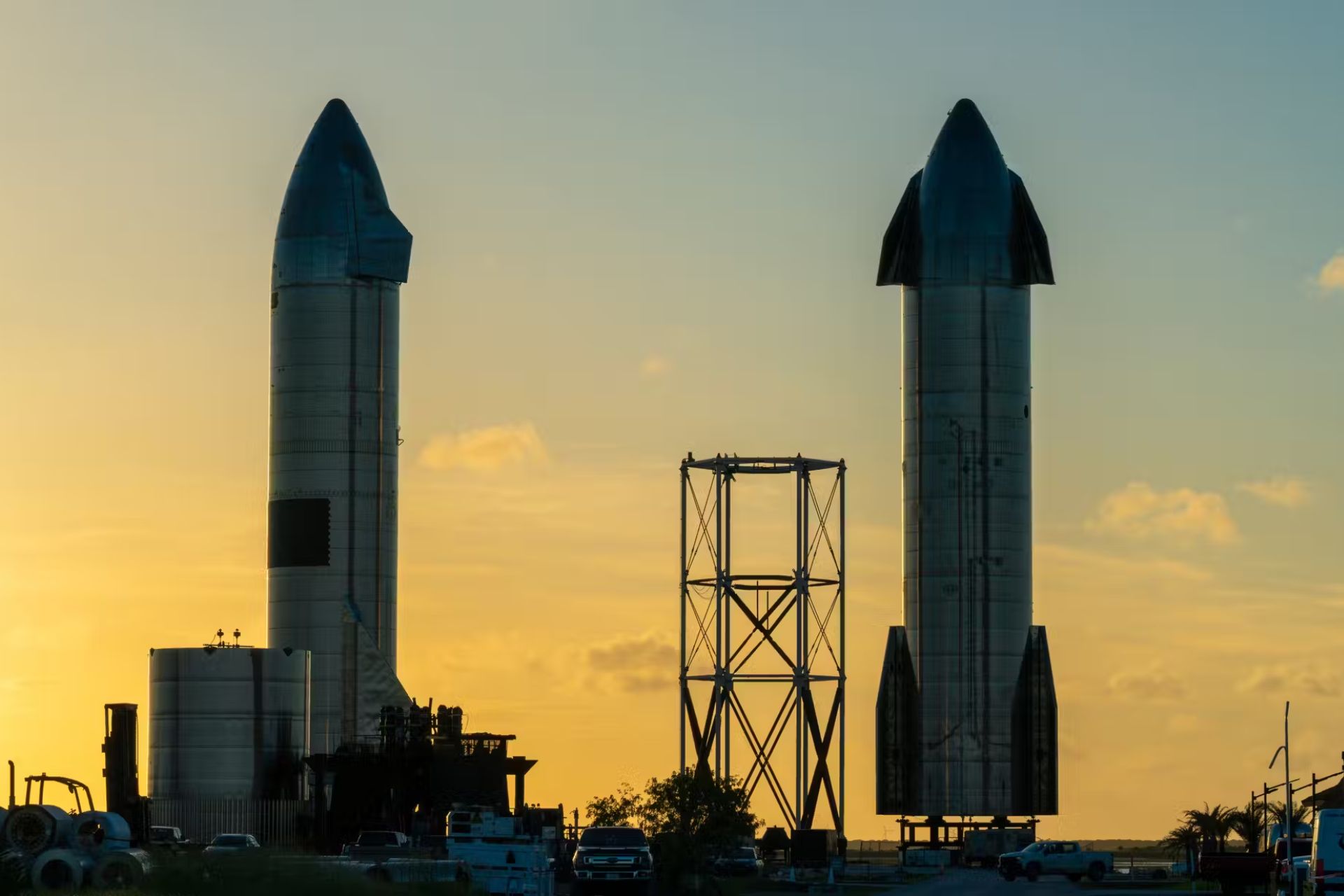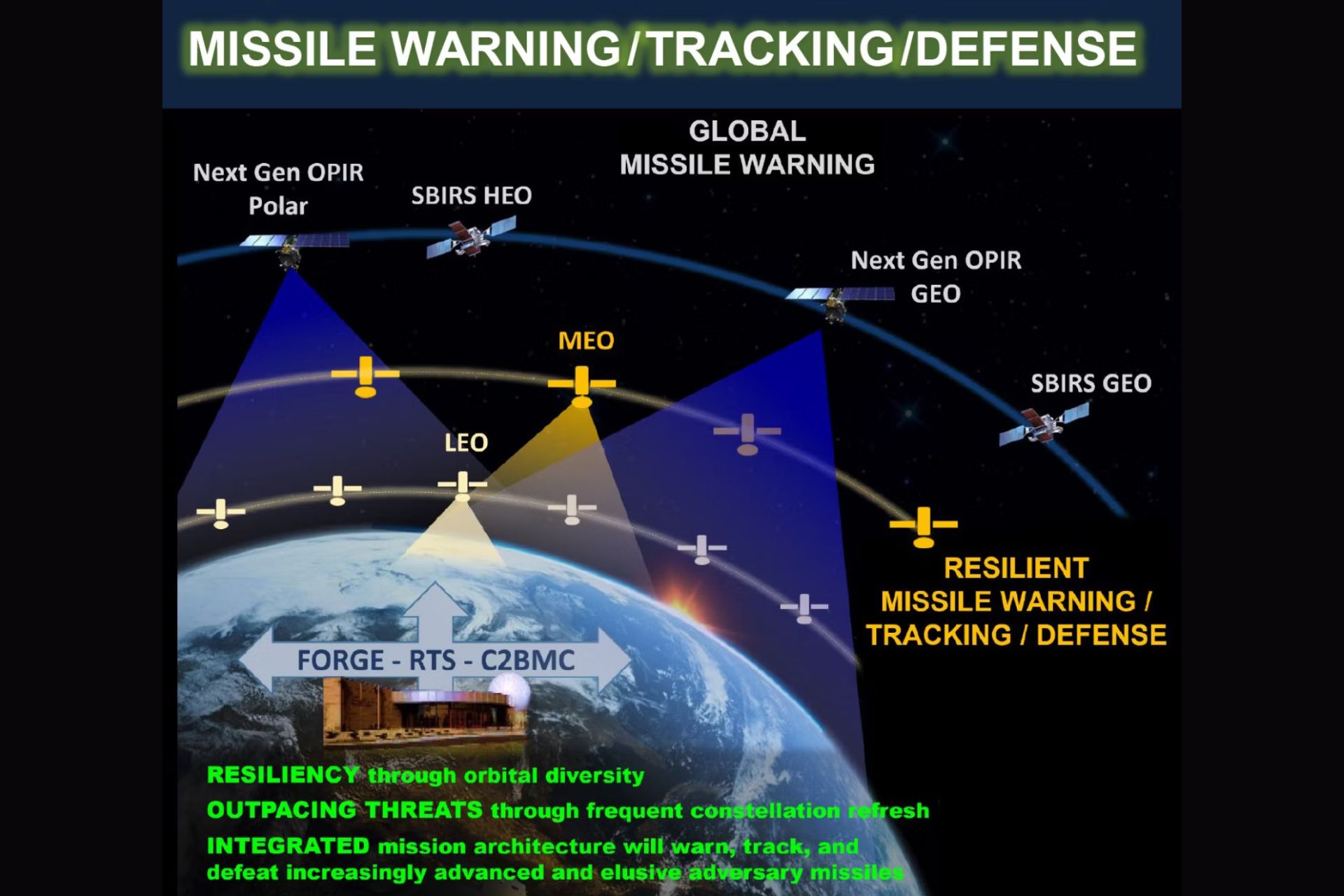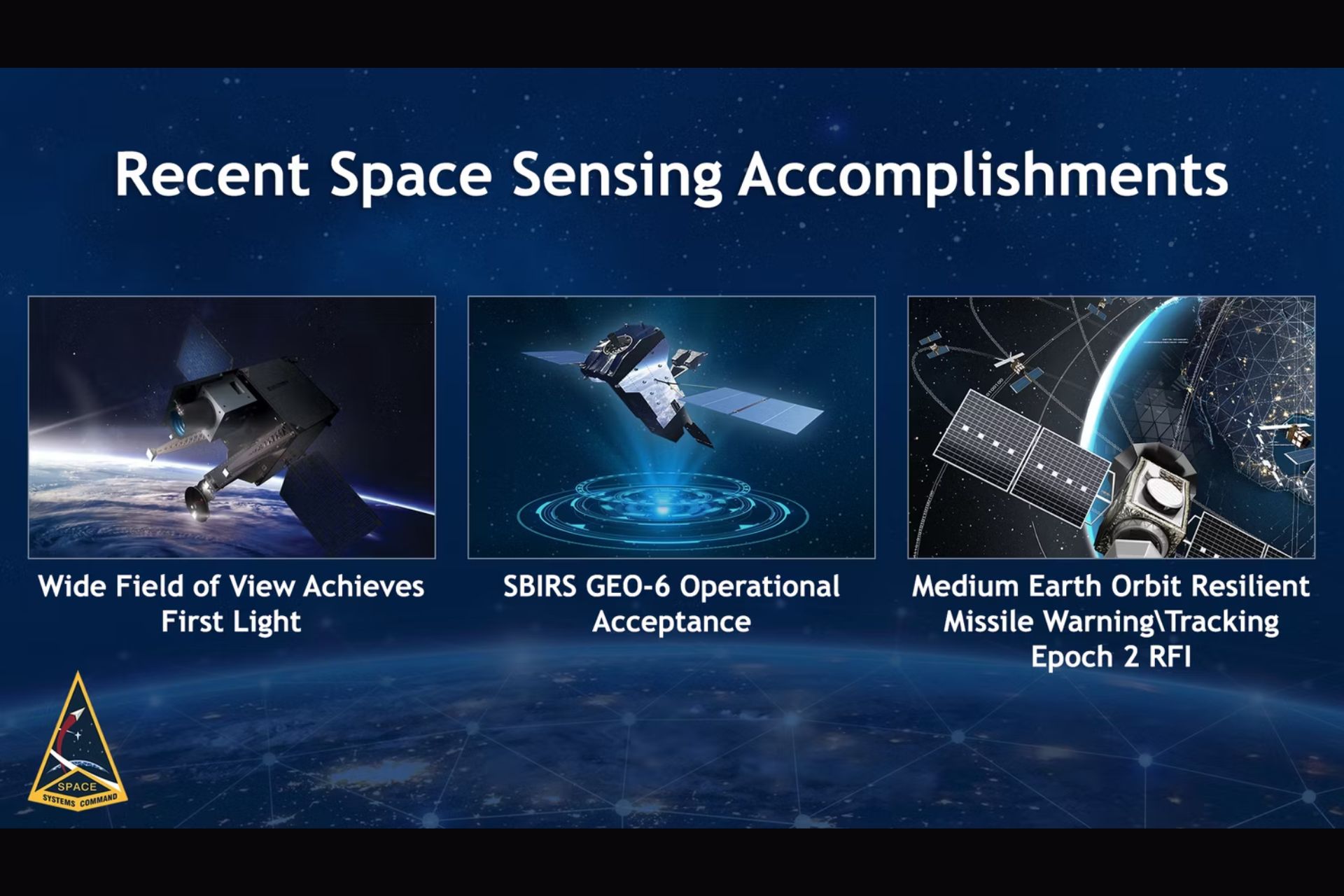US starwars project reborn : US Space force will create new ICBM shield in Outerspace

{loadposition bannertop}
{loadposition sidebarpub}
During the Cold War, the American government attempted to create the Strategic Defense Initiative (SDI), which aimed to detect and neutralize potential Soviet intercontinental ballistic missiles (ICBMs). Quickly nicknamed the “Star Wars” project due to the use of lasers intended to destroy these ICBMs, the project was a significant failure and a financial sinkhole for NASA. Today, the US Space Force (USSF) is advancing to the next phase of its satellite-based missile defense program, Missile Track Custody (MTC). A Request for Proposals (RFP) has been issued for the design of prototypes as part of Missile Track Custody Epoch 2.Follow Army Recognition on Google News at this link
Space X Spacecraft as an illustration of outerspace interest in modern times (Picture source: space X )
During the Cold War, the American government attempted to create the Strategic Defense Initiative (SDI), which aimed to detect and neutralize potential Soviet intercontinental ballistic missiles (ICBMs). Quickly nicknamed the “Star Wars” project due to the use of lasers intended to destroy these ICBMs, the project was a significant failure and a financial sinkhole for NASA. Today, the US Space Force (USSF) is advancing to the next phase of its satellite-based missile defense program, Missile Track Custody (MTC). A Request for Proposals (RFP) has been issued for the design of prototypes as part of Missile Track Custody Epoch 2.
The Space Force is seeking proposals for satellite missile tracking. As stated on the US government’s System for Award Management (SAM) website, the USSF is looking for proposals for its next missile tracking satellite constellation. In the Epoch 2 phase, it will launch up to 18 satellites, adding to the nine already planned in Epoch 1. The program will deploy satellites in medium Earth orbit (MEO) to enhance its missile alert and tracking capabilities, especially for hypersonic missiles that are difficult to track using conventional systems. According to SAM.gov, Epoch 2 providers will build on Epoch 1 to provide the nation with the global tracking access it desperately needs to counter threats, including advanced hypersonic missiles.
With a budget of about $6 billion for the 18 satellites, the DAF will select two providers after the prototype development. Parties have until October 11 to submit their complete proposals, with launches currently scheduled for the late 2020s. One of the main requirements of Epoch 2 is cross-link optical communication for faster data transmission and improved onboard processing.
Epoch 2 project according to US space command ( Picture Source : Us space command )
The “Missile Track Custody Epoch 2” project of the US Space Force is an initiative aimed at strengthening missile tracking and surveillance capabilities through advanced space technologies. This project is an integral part of missile defense modernization and space surveillance efforts. It focuses on the development and deployment of satellites equipped with high-tech sensors capable of detecting, tracking, and maintaining surveillance of missiles throughout their flight trajectory.
Epoch 2 may involve enhancing existing systems by integrating more sophisticated technologies, such as artificial intelligence for real-time trajectory data analysis and early threat detection. The project also aims to establish a more resilient and flexible satellite architecture, capable of responding quickly to emerging threats in an evolving global security environment. This initiative could play a crucial role in the national defense strategy, improving the United States’ ability to protect against missile attacks and strengthen space security.
The Epoch 1 contract was awarded to Millennium Space Systems (a subsidiary of Boeing) and RTX (formerly Raytheon). However, in June, the latter would see its contract to build three of the nine satellites terminated due to rising costs and schedule delays.
The launch of Epoch 1 is currently scheduled for the end of 2026, with at least four satellites in orbit by 2028. With the completion of Epoch 2, the United States will have 27 satellites providing complete global coverage.
Epoch 2 project current status and deployment according to US space command ( Picture Source : Us space command )
Multi-layer defense
Missile Track Custody Epoch 2 is intended to integrate into a “space architecture” consisting of multi-layer satellites in low Earth orbit (LEO), medium Earth orbit (MEO), and geosynchronous Earth orbit (GEO) to ensure comprehensive coverage of emerging missile threats.
Low Earth orbit: altitudes between 160 km and 2,000 km
Medium Earth orbit: altitudes between 2,000 km and 35,786 km
Geosynchronous Earth orbit: an altitude of about 35,786 km
The constellation is built on a “spiral development” philosophy, which plans for new satellites to be added every two or three years to ensure that capabilities remain cutting-edge. An Epoch 3 is planned for the 2030s and will replace the satellites delivered as part of Epoch 1.
The US Space Force recently increased the value of rocket launch contracts for its partners SpaceX and United Launch Alliance (ULA) by $1.8 billion in anticipation of an increased need for launches as part of its National Security Space Launch (NSSL) program. Phase 2 of this program originally planned for 34 launches, but this number has now been increased to 48, while Phase 3 could see up to 90 launches.

{loadposition bannertop}
{loadposition sidebarpub}
During the Cold War, the American government attempted to create the Strategic Defense Initiative (SDI), which aimed to detect and neutralize potential Soviet intercontinental ballistic missiles (ICBMs). Quickly nicknamed the “Star Wars” project due to the use of lasers intended to destroy these ICBMs, the project was a significant failure and a financial sinkhole for NASA. Today, the US Space Force (USSF) is advancing to the next phase of its satellite-based missile defense program, Missile Track Custody (MTC). A Request for Proposals (RFP) has been issued for the design of prototypes as part of Missile Track Custody Epoch 2.
Follow Army Recognition on Google News at this link
Space X Spacecraft as an illustration of outerspace interest in modern times (Picture source: space X )
During the Cold War, the American government attempted to create the Strategic Defense Initiative (SDI), which aimed to detect and neutralize potential Soviet intercontinental ballistic missiles (ICBMs). Quickly nicknamed the “Star Wars” project due to the use of lasers intended to destroy these ICBMs, the project was a significant failure and a financial sinkhole for NASA. Today, the US Space Force (USSF) is advancing to the next phase of its satellite-based missile defense program, Missile Track Custody (MTC). A Request for Proposals (RFP) has been issued for the design of prototypes as part of Missile Track Custody Epoch 2.
The Space Force is seeking proposals for satellite missile tracking. As stated on the US government’s System for Award Management (SAM) website, the USSF is looking for proposals for its next missile tracking satellite constellation. In the Epoch 2 phase, it will launch up to 18 satellites, adding to the nine already planned in Epoch 1. The program will deploy satellites in medium Earth orbit (MEO) to enhance its missile alert and tracking capabilities, especially for hypersonic missiles that are difficult to track using conventional systems. According to SAM.gov, Epoch 2 providers will build on Epoch 1 to provide the nation with the global tracking access it desperately needs to counter threats, including advanced hypersonic missiles.
With a budget of about $6 billion for the 18 satellites, the DAF will select two providers after the prototype development. Parties have until October 11 to submit their complete proposals, with launches currently scheduled for the late 2020s. One of the main requirements of Epoch 2 is cross-link optical communication for faster data transmission and improved onboard processing.

Epoch 2 project according to US space command ( Picture Source : Us space command )
The “Missile Track Custody Epoch 2” project of the US Space Force is an initiative aimed at strengthening missile tracking and surveillance capabilities through advanced space technologies. This project is an integral part of missile defense modernization and space surveillance efforts. It focuses on the development and deployment of satellites equipped with high-tech sensors capable of detecting, tracking, and maintaining surveillance of missiles throughout their flight trajectory.
Epoch 2 may involve enhancing existing systems by integrating more sophisticated technologies, such as artificial intelligence for real-time trajectory data analysis and early threat detection. The project also aims to establish a more resilient and flexible satellite architecture, capable of responding quickly to emerging threats in an evolving global security environment. This initiative could play a crucial role in the national defense strategy, improving the United States’ ability to protect against missile attacks and strengthen space security.
The Epoch 1 contract was awarded to Millennium Space Systems (a subsidiary of Boeing) and RTX (formerly Raytheon). However, in June, the latter would see its contract to build three of the nine satellites terminated due to rising costs and schedule delays.
The launch of Epoch 1 is currently scheduled for the end of 2026, with at least four satellites in orbit by 2028. With the completion of Epoch 2, the United States will have 27 satellites providing complete global coverage.

Epoch 2 project current status and deployment according to US space command ( Picture Source : Us space command )
Multi-layer defense
Missile Track Custody Epoch 2 is intended to integrate into a “space architecture” consisting of multi-layer satellites in low Earth orbit (LEO), medium Earth orbit (MEO), and geosynchronous Earth orbit (GEO) to ensure comprehensive coverage of emerging missile threats.
- Low Earth orbit: altitudes between 160 km and 2,000 km
- Medium Earth orbit: altitudes between 2,000 km and 35,786 km
- Geosynchronous Earth orbit: an altitude of about 35,786 km
The constellation is built on a “spiral development” philosophy, which plans for new satellites to be added every two or three years to ensure that capabilities remain cutting-edge. An Epoch 3 is planned for the 2030s and will replace the satellites delivered as part of Epoch 1.
The US Space Force recently increased the value of rocket launch contracts for its partners SpaceX and United Launch Alliance (ULA) by $1.8 billion in anticipation of an increased need for launches as part of its National Security Space Launch (NSSL) program. Phase 2 of this program originally planned for 34 launches, but this number has now been increased to 48, while Phase 3 could see up to 90 launches.




